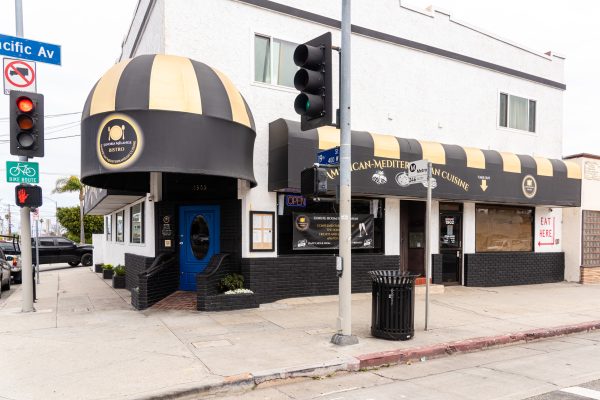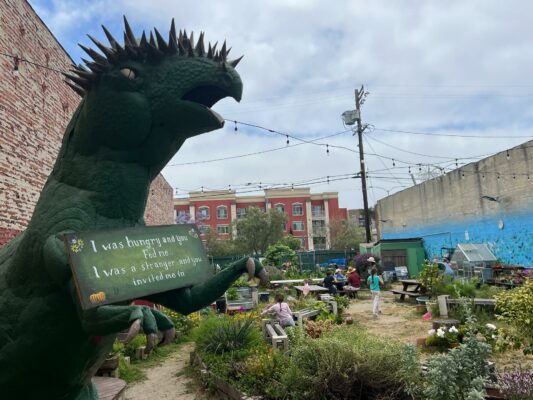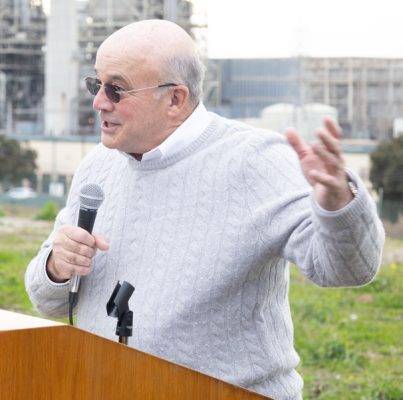
Lifeguards first noticed tar balls washing up on the shore outside their headquarters at Bruce’s Beach around midday on Wednesday, May 27. Although naturally occurring tar washes up on the beach from time to time, the amount was unprecedented. The LA County Department of Public Health immediately closed the beach from El Segundo to Longfellow Avenue in Hermosa Beach.
The closure was soon extended to Torrance as state agencies tried to figure out where the material was coming from.
The nearby Chevron oil refinery checked its operations and said it hadn’t found any leaks. Some wondered if the source could be the Refugio State Beach oil spill in Santa Barbara County six days earlier, which was caused by a corroded pipeline owned by Plains All American Pipeline. The National Oceanographic and Atmospheric Association, which was asked to determine the source of the spill, however, initially said it was unlikely.
As the search continued, most of the tar had been cleaned up by Friday evening, and the beach reopened.
Tar patties continued to wash up intermittently for weeks after.
Almost a month later, on June 23, Plains All American Pipeline and the Coast Guard announced that some of the samples collected had come from the company’s ruptured pipeline 100 miles north. The company attributed some of the tar to natural seepage, however.
“Analysis of initial samples suggests that some of the Line 901 released oil appears to have migrated over time to beaches in Ventura and Los Angeles Counties along with oil from other sources, some of which has been confirmed to be from natural oil seeps,” the company said in a press release.
While the issue retreated from view, state lawmakers introduced four bills in response to the spill. Three eventually passed and were signed by Governor Jerry Brown in October.
They included Senate Bill 295, which requires annual pipeline inspection by the State Fire Marshal; Assembly Bill 864, which requires oil companies to use the best available technology, such as automatic shutoff valves, to prevent spills; and Senate Bill 414, which discourages the use of dispersants in cleanups and requires the Department of Fish and Wildlife’s Office of Spill Prevention and Response team to study the best available technology for cleanups, among other things.
Then on November 10, State Senator Hannah-Beth Jackson, who represents the area where the spill occurred, and State Senator Ben Allen, who represents much of coastal Los Angeles, held a hearing dissecting the oil spill’s effects on the South Bay and the government’s response at the Manhattan Beach library.
Allen called it the state’s “worst oil spill in 25 years.”
“I’m concerned something like this never happens again and if it does, that we respond in the best way possible,” he told the crowd of about 50, which consisted of representatives of the public agencies involved with the cleanup, some environmental nonprofits, members of the Manhattan Beach and Hermosa Beach city councils and members of the public.
Representatives from nonprofits such as Heal the Bay and Surfrider Foundation were critical of the government’s response. Those responsible discussed lessons they had learned.
One recurring theme at the meeting was the need for better communication among federal and state agencies and with the general public.
“People were afraid to go after the beaches reopened because the information was so spotty and tar was still washing up,” said Craig Cadwallader, the head of the South Bay chapter of the Surfrider Foundation. “People come to rely on Surfrider and Heal the Bay to help make sure it’s safe. They were angry at us because we didn’t have information.”
Tom Cullen from the Department of Fish and Wildlife’s Office of Spill Prevention and Response, which had asked NOAA to determine the source of the tar as it was washing up, acknowledged that NOAA needed to improve its methods for determining the source of spills.
Leaders from Heal the Bay and the Surfrider Foundation also expressed frustration that the government didn’t take advantage of their brain and muscle power.
“State and federal agencies have an incredible resource at their disposal among our members,” said Graham Hamilton, the chair of the West Los Angeles/Malibu chapter of the Surfrider Foundation.
Other ideas Cullen mentioned for future consideration were creating a database of volunteers and documenting a standard level of naturally occurring tar for all of the state’s beaches.
Jackson said that the attorney general was conducting a criminal investigation into the spill and that civil lawsuits had been filed.
“This is going to a have a profound economic impact” on the company, she said.
Cullen said that federal and state agencies are completing a Natural Resource Damage Assessment, a legal process which analyzes a spill’s impact on the environment and public resources and the cost to remedy it.
An expert on the process, Megan Herzog from the Emmett Institute on Climate Change and the Environment at UCLA, said that the people conducting the study might talk to businesses affected by beach closures or look at the number of beachgoers compared to the past. Restoration projects could include new facilities for public access, educational centers or repairs to marinas and piers.
The assessment was used in the Deepwater Horizon settlement, according to Cullen. A final restoration plan is expected to be completed by early 2017, according to a handout provided at the meeting. ER










